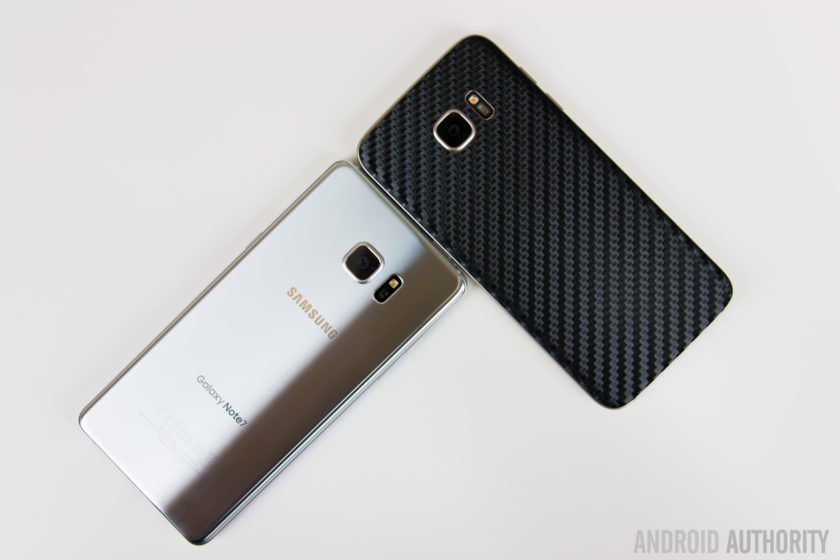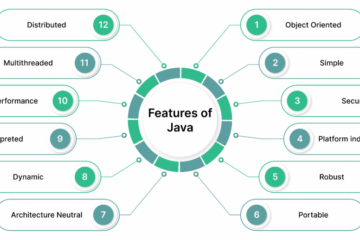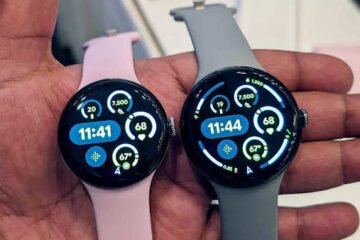Unlike last year, a Plus variant of the Galaxy S7 Edge was no longer necessary, with the display size of the device being bumped up to 5.5-inches. Instead, Samsung decided to incorporate the dual curved edge display feature into the Galaxy Note series, with the Galaxy Note 7.
- Samsung Galaxy Note 7 review
- Samsung Galaxy S7 Edge review
Samsung has always managed to maintain some separation between the Note line and the Galaxy S series, but things being more similar than ever between the two has led to a lot of people to dismiss the Galaxy Note 7 as a Galaxy S7 Edge with an S-Pen. Is that really a fair way to assess the Galaxy Note 7, and are there significant differences between the two Samsung flagships? That’s what we aim to find out, in this in-depth look at the Samsung Galaxy Note 7 vs Galaxy S7 Edge!
Contents
Design

There are obviously a lot of similarities between the Galaxy Note 7 and the Galaxy S7 Edge, and that starts with the design and build quality. Both smartphones feature a metal and glass unibody construction, and with the Galaxy Note 7 also coming with a curved display, they do look and feel very similar.
Of course, this is by no means a bad thing, and what you get are two beautifully designed smartphones that feel extremely solid in the hand. However, as is the case with any smartphone that features a glass backing, both devices are fingerprint magnets, and you do have to wipe them down continuously to keep these phones looking pristine.

While the Galaxy Note 7 does borrow heavily from the design language of its flagship counterpart, Samsung has managed to further refine the design with the former. While the curved edges on the front of the Galaxy Note 7 are noticeable, they are not as drastic as what is seen with the Galaxy S7 Edge, and does help avoid accidental presses with your palm or fingers.
The metal frame has also been more seamlessly integrated into the glass of the Galaxy Note 7, making the phone feel like an unified piece of hardware. While this may seem like a minor design element, it actually makes a huge difference when considering how much smoother and more comfortable the device feels in the hand. Of course, the Galaxy S7 Edge does feel incredible as well, but the Galaxy Note 7 takes it to another level, and how Samsung continues to improve the metal and glass design with every flagship is certainly very impressive.

The Galaxy Note 7 is the larger of the two smartphones, but not by much, and the curved glass allowed for it to be smaller than its predecessors, despite featuring the same display size. One difference between the two devices, that isn’t easily seen, is that Galaxy Note 7 is protected with Gorilla Glass 5 panels, an upgrade from the Gorilla Glass 4 that is found with the Galaxy S7 Edge. Granted, there is some controversy surrounding this with regards to its scratch resistance, but overall, it is supposed to be the stronger and more durable of the two.
The rest of the design elements of both the Galaxy Note 7 and the Galaxy S7 Edge are typical Samsung. The power button and volume rocker are on the right and left sides respectively, and up top is the SIM card slot, with the SIM tray also housing a section for a microSD card. On the bottom is the headphone jack and single speaker unit, and with the Galaxy Note 7, Samsung has finally made the move to a USB Type-C port from the standard microUSB that is found with the Galaxy S7 Edge.

The Galaxy Note 7 also has a slot at the bottom that houses the S-Pen, and in case you were wondering, Samsung has re-designed the S-Pen to make it impossible for it to slide into the slot the wrong way.
Display

The Galaxy Note 7 comes with a larger 5.7-inch display, compared to the 5.5-inch screen of the Galaxy S7 Edge, but other than the slight difference in size, these displays are practically identical. Both are Super AMOLED screens with a Quad HD resolution, resulting in both being extremely sharp, and offering colors that are vibrant and saturated, along with deep inky blacks.
Samsung’s display prowess is well known at this point, and it’s not surprising that both devices feature stunning displays, making doing anything, from watching videos, browsing the web, or playing games, an absolute joy on either smartphone.

The Samsung Galaxy Note 7 does offer an interesting feature, and that is support for streaming HDR content, which makes watching movies and TV shows, on Amazon Video or Netflix for example, even more enjoyable, on this already bright and beautiful display. This is something you really have to see in person to truly appreciate, and things will only get better, as more and more HDR titles are released.
Another really useful feature of the Galaxy Note 7 is the ability to downscale the display resolution to 1080p, or even 720p, to get that little bit of extra juice out of the battery.
Performance

Under the hood, both smartphones come with the quad-core Qualcomm Snapdragon 820 processor, that is backed by the Adreno 530 GPU and 4 GB of RAM. Depending on the market, and Exynos 8890 variant of both smartphones are available as well. With the same processing package and software package, the day to day performance you get with both is understandably identical as well.
While some may be disappointed with the fact the Galaxy Note 7 doesn’t feature an upgraded processor or more RAM, the available setup is definitely plenty powerful. Both smartphones are blazing fast, and everything, from opening, closing and switching between apps, to processor-intensive gaming, is easily handled. There also finally some Vulkan-supported game titles available on the Google Play Store, allowing for superior graphics and gameplay on both the Galaxy Note 7 and Galaxy S7 Edge.
Hardware

While the Galaxy S7 Edge is available in 32 GB and 64 GB variants, 64 GB is the only on-board storage option available with the Galaxy Note 7. If storage is still a concern, both smartphones also offer expandable storage via microSD card, up to an additional 256 GB. In some markets, both smartphones come with dual SIM capabilities, but since a hybrid slot is utilized, users will have to choose with dual SIM or expandable storage.
Right below the display of both smartphones is a fingerprint scanner that is embedded into the physical home button. At this point, we are all aware of how well Samsung’s fingerprint sensors work, and in both cases, they are fast, accurate, and reliable, and provide a nice additional layer of security.

However, with the Galaxy Note 7, Samsung has taken bio-metric security a step further, with the inclusion of an iris scanner, which uses infrared to scan your eyes and unlock the phone. It actually works surprisingly well, given that it is a first generation feature, but does take a little bit longer than when using the fingerprint sensor, because of the additional steps involved.
After waking up the phone, you actually need to swipe up before it starts scanning your eyes. The swipe gesture is meant to prevent the phone from scanning your eyes when you don’t want it to, but the option to disable this would have been nice to have.
Samsung re-introduced dust and water resistance with their 2016 flagships, and both the Galaxy Note 7 and Galaxy S7 Edge come with an IP68 rating for protection against the elements. In the case of the Galaxy Note 7, the S-Pen is also protected, which means that if you ever find the need for it, you will be able to take notes while the phone is submerged.

Speaking of the S-Pen, as is the case with every iteration, the new stylus brings with a lot of improvements. It has a much finer point and more levels of pressure sensitivity, allowing for a more accurate and precise writing experience. However, perhaps the most important change is the fact that the S-Pen cannot be put into its slot backwards anymore.
Samsung has also added a slew of features to take advantage of the revamped S-Pen. You can now hover the stylus over the screen to translate text or images, magnify the screen, or create a GIF from something like a Youtube video to share with friends, assuming that it is not DRM protected content. The Screen Off Memo has also been improved, giving you the ability to scroll and write much longer memos, that can also be pinned for up to an hour to the Always On display, to make it more easily accessible.

The Galaxy Note 7 packs a 3,500 mAh battery, which is the largest we’ve seen with a Galaxy Note device, but is still slightly smaller than the 3,600 mAh unit of the Galaxy S7 Edge. The difference in capacity is negligible when it comes to the battery life that is available with both.
If you are looking for a smartphone that provides five or six hours of screen-on time on a consistent basis, and can comfortably last a full day even with heavy usage, both devices will do the trick. Both devices also come with fast charging capabilities and fast wireless charging as well, so no matter how you decide to charge your phone, you will be able to do so quickly.
Camera

Both smartphones also feature the exact same camera package as well. On the rear is a 12 MP camera with a f/1.7 aperture, OIS, and the super fast dual pixel autofocus technology, and up front is a 5 MP shooter with a wide angle lens, which works really well to put a lot of detail into your selfie.
Given that the camera of the Galaxy S7 and Galaxy S7 Edge are widely considered to be some the best smartphone cameras around, Samsung can’t be blamed for deciding to stick with the same sensor. It takes fantastic images in almost all lighting conditions, with plenty of detail, sharpness, color, and depth.
The pictures do look similar for the most part, but it appears as though Samsung has tweaked the image processing. First off, the image sharpening looks a lot more natural with the Galaxy Note 7, and isn’t as aggressive as what is seen with the Galaxy S7 Edge, and secondly, the white balance issues that plagued the latter in low-light conditions aren’t to be seen with the former, which is amazing, and just these two changes help make the Note 7 camera even better.The most notable improvements with the camera experience actually have to do with the camera application. While the camera app of the Galaxy S7 Edge is already clean and easy to navigate, Samsung has made the camera software more intuitive with the Galaxy Note 7.
A double tap of the home button launches the camera as usual, and the app comes with all of the same features as before, including selective focus, live broadcast, and a robust Pro mode, but the interface of the Galaxy Note 7 camera app has been revamped with a much flatter and more simplistic look. It is also much easier to navigate with one hand, using swipe gestures. You can swipe to the right to access the camera modes, to the left to bring up the various camera filters, and swipe up or down to switch between the rear and front cameras.
Software

On the software side of things, both the Galaxy Note 7 and Galaxy S7 Edge are running Android 6.0 Marshmallow, with the TouchWiz UI on top. As expected, the general look and feel of the software package is similar, with features like Multi Window and a Themes store available with both. However, Samsung has made a few changes to the TouchWiz UI that is available with the Galaxy Note 7.
If you look closely, you will see that many of the app icons have been revamped with new graphics and a more uniform look. Certain UI elements, like the notification shade and the Settings menu, have also been given a slight facelift to match the rest of the changes that have been throughout TouchWiz.

The settings menu is cleaner and a lot more streamlined, making is much easier to find what you’re looking for. They have also dialed back a lot of the colors to allow for a more minimalistic appearance. Instead of the bright bold colors that are seen with the Galaxy S7 Edge, Samsung has opted for a softer, more eggshell like color scheme that is more appealing and easier on the eyes. This change can be found throughout the interface, and especially with Samsung’s own applications.
Samsung also consolidated all of their different note taking applications into one app called Samsung Notes, and whether you use the app or not, this change makes the process of finding the appropriate app for making a note or drawing a lot less confusing, while also helping reduce some of the bloatware. The only change that I’m not a fan of is that the toggles in the notification shade on the Galaxy Note 7 are no longer scrollable like they are on the Galaxy S7 Edge, and to get to the brightness slider, it now takes two swipes down on the notification shade instead of one.

The Galaxy Note 7 also brings a new secure folder to lock away any apps or sensitive information that you don’t want anyone else to access, and this can be locked with a standard password, pin, lock pattern, your fingerprints, and even the brand new iris scanner. Touchwiz is surprisingly pleasant to use on the Galaxy Note 7, with Samsung making a lot of really nice changes, and hopefully we’ll see this trickle down to the Galaxy S7 and Galaxy S7 Edge in a future update.
Finally, with the Galaxy Note 7 also featuring dual curved edges, it’s only natural for the Edge Panels to make their way over from the Galaxy S7 Edge. The Edge features include panels to easily access your favorite contacts, most used applications, and tasks, along with a variety of other information, including sports scores and the weather, all available with a simple swipe from the edge of the display.
Specs comparison
| Samsung Galaxy Note 7 | Samsung Galaxy S7 Edge | |
|---|---|---|
| Display | 5.7-inch Super AMOLED display Quad HD resolution, 518 ppi |
5.5-inch Super AMOLED display Quad HD resolution, 534 ppi |
| Processor | 2.15 GHz quad-core Qualcomm Snapdragon 820 processor Adreno 530 GPU |
2.15 GHz quad-core Qualcomm Snapdragon 820 processor Adreno 530 GPU |
| RAM | 4 GB | 4 GB |
| Storage | 32/64 GB expandable via microSD card up to 256 GB |
64 GB expandable via microSD card up to 256 GB |
| Camera | 12 MP rear camera, f/1.7 aperture, OIS, LED flash 5 MP front-facing camera with wide angle lens |
12 MP rear camera, f/1.7 aperture, OIS, LED flash 5 MP front-facing camera with wide angle lens |
| Connectivity | Wi-Fi 802.11 a/b/g/n/ac Bluetooth 4.2 NFC GPS + GLONASS USB Type-C (USB 3.1) |
Wi-Fi 802.11 a/b/g/n/ac Bluetooth 4.2 NFC GPS + GLONASS microUSB 2.0 |
| Battery | 3,500 mAh | 3,600 mAh |
| Software | Android 6.0 Marshmallow | Android 6.0 Marshmallow |
| Dimensions | 153.5 x 73.9 x 7.9 mm 169 grams |
150.9 x 72.6 x 7.7 mm 157 grams |
Gallery



Final thoughts
So, there you have it for this comprehensive look at the Samsung Galaxy Note 7 vs Galaxy S7 Edge! As we have seen throughout this review, the Galaxy Note 7 borrows a lot from the Galaxy S7 Edge, but it is an entirely different phone that offers its own unique experience. Despite how much it has in common with the Galaxy S7 Edge, it does feel the way a Note device should feel, and it certainly is more than just the Galaxy S7 Edge with an S-Pen.

With Samsung getting a lot right with the Galaxy S7 Edge, it’s not surprising to see a lot of these hardware and software features make their way over to the Galaxy Note 7, and this does, in fact, help simplify the decision making process for consumers. The Galaxy S series, and now the Galaxy Note 7, all offer the same core specifications, the identical camera setup, and largely similar software experience, so when making a choice, it all boils down to which features you are looking for.
If a small and compact device is your need, the Galaxy S7 is the way to go, and if durability is a concern, the Galaxy S7 Active is a great companion. The Galaxy S7 Edge gives you a slightly larger display, with curved edges, and a bigger battery. However, if the S-Pen is important, and an iris scanner seems interesting, the Galaxy Note 7 is the answer.
The Galaxy Note 7 is certainly not a worthy upgrade from the Galaxy S7 Edge, but it isn’t meant to be. Instead, of you are looking to make the jump from older Samsung flagships like the Galaxy Note 5, the Galaxy S6 series, or the Galaxy Note 4, it will definitely feel like an amazing upgrade, and you won’t regret making the leap to any “7.”
[Source:-Android Police]




